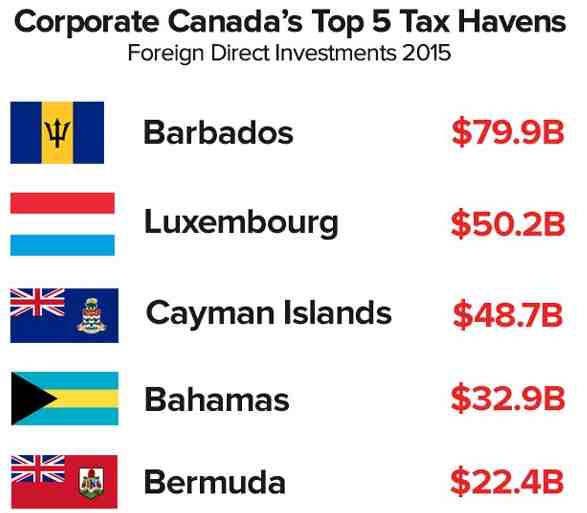HISTORY OF TAX HAVENS
The
concept of tax havens has probably been around since countries
decided to finance their governments by taxing their citizens.
Countries
might compete by keeping taxes low and thus attracting business
from high tax countries. Sometimes a country will designate
a region or city a low tax or tax free zone, either to stimulate
its economy or to buy the loyalty of its citizens.
Ancient
Rome was a master in using tax free areas, a sort of early enterprise
zones. The first recorded instance took place in the 2nd Century
BC when Rome decided to undercut the then independent Greek
island state of Rhodes by establishing a tax free port on the
island of Delos. Even though Rhodes only charged a 2 percent
on trade, it quickly lost trade to the new tax free port and
its era as a commercial power was effectively ended.
Rome
often used tax policy to reward friends and punish enemies.
Cities which were loyal were often granted tax free status.
Cities which were not so loyal had to pay tribute, often at
the point of a sword. The ancient kingdom of Judea unwisely
refused a treaty of friendship with Rome, which would have led
to tax free status. Instead the Jews lost their freedom and
their country for the next 18 centuries.
 The
original Muslims conquerors used tax policy as a means of religious
conversion. While the Muslims who conquered much of the world
between modern Spain and modern Pakistan were relatively tolerant
toward their follow monotheists, including Christians and Jews,
they did impose a special tax on anyone who refused to convert
to Islam. Naturally, quite a few people in the places where
the Prophet’s warriors subdued became fervent Muslims.
The
original Muslims conquerors used tax policy as a means of religious
conversion. While the Muslims who conquered much of the world
between modern Spain and modern Pakistan were relatively tolerant
toward their follow monotheists, including Christians and Jews,
they did impose a special tax on anyone who refused to convert
to Islam. Naturally, quite a few people in the places where
the Prophet’s warriors subdued became fervent Muslims.
The
European colonial powers attracted settlers to the New World
with favourable tax policies The Spanish, the English, and the
Dutch dangled low taxes as an incentive for its citizens to
brave a long ocean voyage and start life in a wilderness filled
with often unfriendly natives. Ironically the main cause of
the American Revolution stemmed from an attempt by the English
government to raise taxes on the citizens of the American colonies
to pay for their defense and administration.
Most
economic observers propose that the true original tax haven
was Switzerland, with the runner-up being Liechtenstein. The
banking industry in Switzerland was historically known as a
capital haven, particularly for citizens running away from social
disturbance in many countries, such as Germany, Russia, and
South America among others.
In
the early 1900s, directly after the Great War, following widespread
devastation, a large number of governments in Europe raised
taxes abruptly to help pay for reconstruction efforts. For the
most part, Switzerland, having stayed neutral during World War
I, evaded these increased costs of rebuilding infrastructure.
It was, therefore, perfectly positioned to keep a low tax base.
Consequently, there was a substantial stream of capital into
Switzerland for tax-related reasons.
Tax
haven usage in modern times has undergone several phases of
development, especially after World War II. Tax Haven typically
referred to personal taxation avoidance, between the 1920s and
the 1950s. Often times, the term was used to mean “countries
that a person could retire to and reduce their post-retirement
tax burden.” After the 1950s, however, corporate entities
increasingly began to use tax havens to lower their global tax
obligations.
This
corporate tax-reduction strategy usually depended on an existing
double taxation treaty between a small jurisdiction (one with
a low tax liability) and a larger jurisdiction (one with a high
tax burden that the company would otherwise be subject to).
To take advantage of the double taxation treaty and thereby
pay taxes at the lower rate, corporations would structure company
ownership through the smaller jurisdiction.
Ironically,
the U.K. probably has been more responsible for the proliferation
of tax havens than any other single nation, which during the
late 1960s and throughout the 1970s encouraged many of its dependent
territories and soon to be independent micro-nations, to develop
their own financial services industries so as to make them less
dependent on Whitehall for economic aid. This was, at the same
time when the nation under the Labour government of the late
1960s, established an hitherto unprecedented 90% top marginal
tax rate.
The majority of tax havens, between the early and mid-1980s,
shifted the aim of their legislation to develop corporate instruments
that were ‘hypothecated’ and exempt from local taxation
(in most cases, these could not trade locally either). These
vehicles typically were referred to as “exempt companies”
or “international business corporations” (IBCs).
Modern
tax havens do not even have to be separate countries. The United
States has seen the flight of businesses and capital from high
tax, high regulation states such as California, Illinois, and
New York to low tax states such as Texas and Florida. The latter
states are cleverly using tax policy to build up industry, create
jobs and, ironically, increase tax revenue at the expense of
the former.